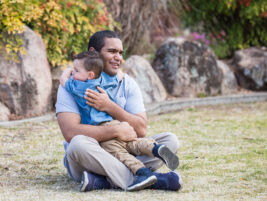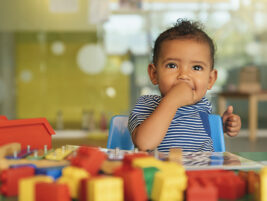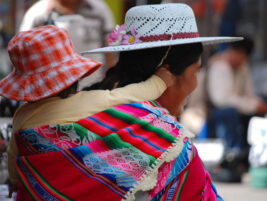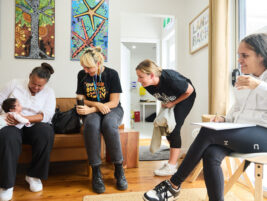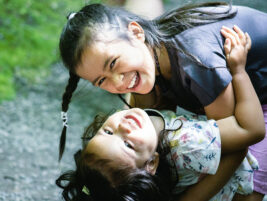The authors acknowledge the traditional owners of the lands and waters throughout Victoria, and pay our respects to Elders Past and Present.
‘For First Peoples in Victoria there is an unbroken connection between their experiences with colonial child removal practices and their experiences with the current Victorian Child Protection system. These traumas, historical and contemporary, continue to impact First Peoples families and communities’ (Yoorook, 2022).
This paper describes a First Nations led, culturally sensitive, approach to adjudicating matters for First Nations families involved in the Children’s Court of Victoria, Australia, where infants are over-represented both compared to non-First Nations families and older First Nations children. The approach has been implemented in 2 regions, one metropolitan and one regional, and has made a substantial difference for families involved in the current system. Nonetheless, learnings have been that decolonising from within the colonial system has, by definition, been limited and a new, First Nations led, system needs to be developed.
At 30 June 2022, when compared to non-Aboriginal children, Aboriginal children in Victoria were:
- 7 times as likely to have a report made to Child Protection
- 6 times as likely to have a finalised investigation by Child Protection Services
- 5 times as likely to be found ‘in need of protection’ by Child Protection Services
- 7 times as likely to be in out of home care (Yoorook, 2022).
Decisions about the protection of children are made in the colonial adversarial system of law.
First Nations people in Victoria called for the development of a specialist Koori Hearing Day in the family division of Children’s Court that is conducted as a solution focused, family led approach, embedded in culture. Their calls resulted in a pilot program that was established in 2016.
Marram Ngala Ganbu (MNG) is a Woiwurrung word for ‘we are one’, given to the program by the local traditional owners. When applied to Protection matters it calls to mind Winnicott’s phrase of ‘there is no such thing as a baby’ (1960), immediately addressing how impossible it is to put babies and toddlers against parents in an adversarial system.
Most aspects of the proceedings have been adjusted to be inclusive and respectful of Aboriginal families’ kinship and culture, within the confines of the Child Youth and Families Act (2005). Some key aspects are described below.
In MNG the hierarchy of magistrate on the bench, lawyers at the bar table and family in the gallery has been removed. All parties including family, extended family, elders and support services sit at an oval bar table to have a conversation with the Magistrate. The conversation happens between the magistrate, family and Child Protection with help from the lawyers.
The bar table itself (see image) is embedded in culture. It is covered by an enormous possum skin cloak made by the local Aboriginal community that people hold, particularly when stressed. In the centre is a coolamon filled with leaves. The coolamon, crafted by a young person in care, is a symbol of care and nurturing, and traditionally carried life-giving water as well as babies themselves. All eyes are drawn to the coolamon in the centre of the table, reminding of the focus on the baby.
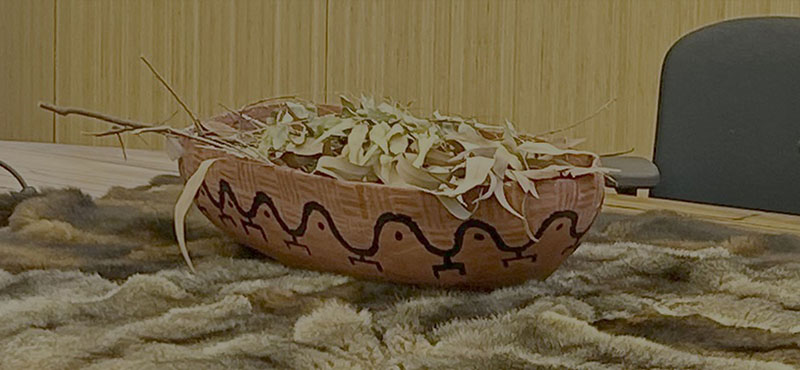
Key team members ensure there is enough time for each family and are responsible for building relationships with service providers and communities, opening the door to say this is the safe place to come and do the business we need to do. Historically, for Aboriginal people, courts were a place where you have your children removed or go to jail. The team’s difficult task is to break down these barriers.
There is direct support throughout, such as making sure families know who the lawyers are and what their role is; when their Court hearing day is; what to expect on that day; where to sit, walk; and to make a cup of tea and have a debrief. Where appropriate, families are contacted months before the hearing day to lower the anxiety that comes with going to court for Aboriginal families.
A Child Protection Practice Leader mirrors the role with the family for the Department; for example, making sure actions from the court hearing are followed up. This ensures things progress within the 12–24-month timeframe for reunification or permanency required under the Act in Victoria (2005; revision 2016). It’s very difficult for Aboriginal families to wipe 230 years of colonization in 12 months, so there is much focus on supporting progress.
One magistrate follows the life of the case, which means there is nowhere to hide in terms of accountability for the families, service providers, and Child Protection.
Outcomes have been more Aboriginal children staying with family, and greater culturally sensitive therapeutic jurisprudence throughout the Children’s Court (Arabena et al, 2019).
Key learnings from MNG have been that to truly decolonise, band-aid fixes in colonial systems need to give way to large-scale transformation. Victoria is embarking on a Treaty between the First Nations and the Victorian Government, which, combined with the findings from the Yoorook Truth and Justice Commission (2022), are paving the way for a First Nations led practice.
References
AIHW (2025). Child Protection in Australia. https://www.aihw.gov.au/reports-data/health-welfare-services/child-protection/data
Arabena, K., Bunston, W., Campbell, D., Eccles, K., Hume, D., & King, S. (2019). Evaluation of Marram-Ngala Ganbu, prepared for the Children’s Court of Victoria. https://www.socialventures.org.au/wp-content/uploads/2024/10/Evaluation-of-Marram-Ngala-Ganbu-November_SVA-Consulting.pdf
Children, Youth and Families Act 2005 (Vic)
Winnicott, D.W. (1960). The Theory of the Parent-Infant Relationship. International Journal of Psycho-Analysis, 41, pp. 585-595.
Yoorook (2022). https://www.yoorrook.org.au/focus-areas/child-protection
Authors
Morris, Ashley
Gunditjmara man and former Manager,
Koori Services and Programs,
Australia
Dr Milburn, Nicole
Private practice,
Australia



